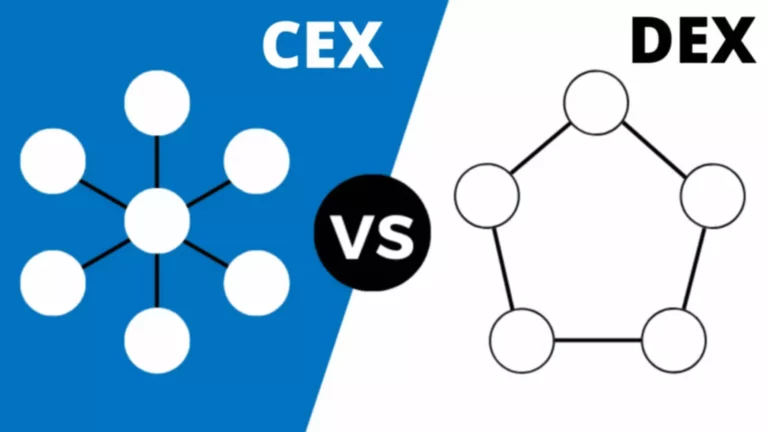Ethereum proof of stake won’t require mining; as such, it will not have an result on ETH value. However, the provision of latest ETH tokens will cut back so much that demand would possibly exceed provide, thereby pushing prices up. Margex will pause deposits and withdrawals of latest ETH and ERC-20 tokens in the course of the upcoming improve. This pause will be brief to ensure that the system’s transition has been reflected.

The Merge between ETH1 and the Beacon Chain is slated to occur in September 2022 after years of updates, enchancment, tests, and phases. According to some analysts, miners’ fees will be turned into a “digital ash” that nobody can use. The option for miners is to contribute their GPUs to some Web3 protocols corresponding to Akash, Render Network, or Livepeer. Once these transactions are verified as accurate Ethereum Proof of Stake Model, the system adds them as a new block. Overall, proof-of-stake, as it is implemented on Ethereum, has been demonstrated to be extra economically safe than proof-of-work. “On a world scale, proof of work is most worthwhile where vitality may be had for the lowest price,” says Smith.
The Roadmap To Ethereum 20
Having one specific validator pre-selected to propose a block in every slot creates the potential for denial-of-service where large amounts of network traffic knock that particular validator offline. Certain implementations of proof of stake might leave blockchains extra vulnerable to totally different sorts of assaults than proof of labor, such as low-cost bribe assaults. Susceptibility to attacks decreases the general security of the blockchain. Proof of labor has earned a nasty reputation for the massive amounts of computational power—and electricity—it consumes. Given heightened concern concerning the environmental impacts of blockchains that use proof of work, like Bitcoin, proof of stake provides doubtlessly better outcomes for the surroundings. Once a block passes all the verification steps, it is thought of legitimate and could be added to the blockchain.
These delegates take turns producing blocks, and their voting energy is proportional to the number of tokens held. DPoS aims to offer fast transaction processing and scalability while maintaining decentralization by way of a delegated governance model. The value of ether, Ethereum’s cryptocurrency, could move up or down after the preliminary instability of hypothesis, and other proof-of-stake coins like Solana and Polkadot could presumably be affected as properly. The change could additionally put Ethereum in additional of a regulatory gray space.
This strategy incentivized validators to carry their cash longer, promoting network stability and discouraging malicious conduct. On the other side of the coin, startups built around miners, who have been minimize out of Ethereum’s course of, will likely need to pivot or refocus on Bitcoin and different proof-of-work networks. Some die-hard Ethereum 1 proponents plan to stick with proof-of-work Ethereum.
What’s Proof Of Stake? The Eco-friendly Mannequin Ethereum Will Adopt Post-‘merge,’ Defined
That sign alone may prove transformative for the Web3 trade, which is still getting regular VC funding and could find new gas in buoyed public perception. Ethereum is shifting to a consensus mechanism called proof-of-stake (PoS) from proof-of-work (PoW). This was all the time the plan as it is a key part in the community’s strategy to scale Ethereum via the Eth2 upgrades.
Ultimately, the preference for PoS or PoW is determined by a blockchain network’s particular targets and priorities. Ethereum’s shift to PoS addresses scalability and power concerns, but it’s essential to contemplate trade-offs and ongoing research in consensus mechanisms. Ethereum employs a quantity of slashing circumstances that validators should adhere to.
To exploit a PoW network, a hacker will management 51% of computing power, which is inconceivable. But in a PoS chain, a hacker will want 51% of the entire crypto on the network. Thankfully, Ethereum builders have been making strikes to migrate to a pos consensus.
The choice of consensus mechanism depends on the actual objectives and characteristics of the blockchain community. It ensures that all nodes in the community attain a consensus or agreement on the order and content material of transactions with out the necessity for a central authority. Proof of stake, then again, requires “validators” to put up a stake—a cache of ether tokens in this case—for a chance to be chosen to approve transactions and earn a small reward. The extra a validator stakes, the greater the prospect of profitable the reward. But all staked ether will earn interest, which turns staking into one thing like buying shares or bonds with out the computing overhead. When Ethereum replaces proof-of-work with proof-of-stake, there would be the added complexity of shard chains.
After the upgrade, Margex users will discover their ETH2 stability on their Ethereum pockets. Note that a proposer might be selected for every new block created on the network. Also, if any proposer behaves dishonestly, he pays the “Slashing” penalty. But recently, there have been a lot of arguments that proof of stake won’t be as safe as the PoW model.
One of the validators within the group will act as the “block proposer,” whereas the others would be the “Attesters.” While the proposer initiates a block proposal, the attesters will validate it. The Ethereum community is happy about the upcoming migration from proof-of-work to the extra https://www.xcritical.in/ scalable proof of stake consensus mechanism. The Ethereum chain is a hub for many NFT and Defi initiatives but faces many points. Understanding Ethereum’s Proof of Stake consensus mechanism will help you make informed choices about interacting with the blockchain.
This is done by creating a block header containing necessary data such as the previous block’s hash, the timestamp, and a reference to the Ethereum Virtual Machine (EVM) state. Firstly, they validate transactions by verifying that they adhere to the network’s rules and consensus protocols. Validators ensure that transactions have legitimate signatures, the sender has adequate funds, and the transaction doesn’t violate predefined circumstances or good contract guidelines. The validators will maintain the vast majority of ETH cash, and there shall be a special method of distributing new tokens. This could result in centralization as an alternative of decentralization, as more tokens shall be within the hands of validators. The participants are responsible for verifying transaction data are known as Validators.
Proof-of-stake And Safety
The validator selection in Ethereum’s Proof of Stake (PoS) system is based on a validator’s stake in the community. To explain, the greater the stake, the extra doubtless that node shall be chosen to add the new block to the chain. The best choice for Ethereum is for validators to be run domestically on house computer systems, maximizing decentralization. This is why Ethereum resists changes that improve the hardware requirements for running a node/validator.
- They verify that each transaction has a valid signature, the sender has sufficient funds, and doesn’t violate predefined circumstances or sensible contract guidelines.
- Later on, a way known as “rollups” will speed transactions by executing them off chain and sending the information back to the main Ethereum network.
- In the Ethereum PoS system, every validator should stake the network’s native tokens (in this case, 32 ETH).
- PoS replaces the energy-intensive mining means of PoW with validators who maintain and stake their Ethereum to safe the community.
- Users can participate in staking rewards whereas simultaneously leveraging their staked ETH as collateral for borrowing or providing liquidity.
Solana, Terra and Cardano are among the biggest cryptocurrencies that use proof of stake. Ethereum, the second-largest crypto by market capitalization after Bitcoin, is in the midst of a transition from proof of work to proof of stake. Becoming an Ethereum validator plays a vital position in the Ethereum community, contributing to its security, consensus, and general functionality. To turn into an Ethereum validator, one must comply with sure steps and fulfill specific requirements.
What’s Slashing In Ethereum?
Besides, it’s going to assist multiple NFTs, decentralized functions, and good contracts, which is able to enhance each Ethereum’s enchantment and value in the long term. The reduction in circulating ETH will have an effect on value positively, as demand will exceed supply. According to many industry observers, the upcoming improve may even convey more institutional buyers to buy ETH, improving the ecosystem in the long term. Also, the merge will clear up Ethereum’s scalability points and reduce vitality consumption by 95%. Many players consider that the merge will influence the price of Ethereum tokens.
Proof Of Stake Vs Proof Of Labor
But some members can join a staking pool to lock lesser quantities. Proof-of-stake is more complicated than proof-of-work, which suggests there are more potential assault vectors to handle. Instead of 1 peer-to-peer community connecting shoppers, there are two, each implementing a separate protocol.
Not only is that this some big cash however it would most likely cause ETH’s value to drop. There’s little or no incentive to destroy the value of a foreign money you have a majority stake in. There are stronger incentives to keep the network safe and healthy.
Validators are chosen at random to create blocks and are liable for checking and confirming blocks they do not create. A person’s stake can also be used as a way to incentivise good validator behaviour. For example, a consumer can lose a portion of their stake for things like going offline (failing to validate), or their entire stake for deliberate collusion. Proponents also claim that proof of stake is more secure than proof of labor.
